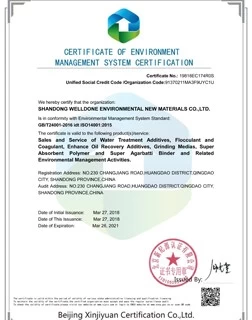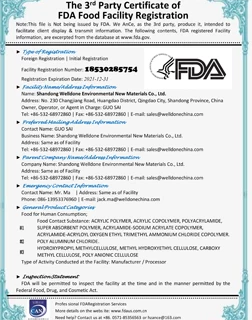Application of Hydroxyethyl cellulose HEC
Agricultural application
HEC can be used in water-based sprays to effectively suspend solid poisons; it can be used in spray operations to adhere poisons to the foliage; it can be used as a thickener for spray emulsions to reduce the drifting of agents, thereby increasing the effect of foliar spraying; it can also be used as a film-forming agent for seed coating; as an adhesive for the recycling of tobacco leaves.
Building materials
HEC can be used in gypsum, cement, lime and mortar systems, tile pasting and mortar.In the cement component, it can also be used as a retarder and water retaining agent.In the surface treatment of siding operations, it is used in the preparation of latex body, which can pre-treat the surface and relieve the pressure on the wall, and the effect of painting and surface coating is better; it can be used as a thickener for wallpaper viscose.HEC can improve the performance of gypsum mortar by increasing the hardening and application time.In terms of compression resistance, distortion resistance and spatial stability, HEC has better effects than other cellulose types.
Cosmetics and detergents
HEC is an effective film-forming agent, adhesive, thickener, stabilizer and dispersant in shampoos, hair sprays, neutralizers, hair care agents and cosmetics.Its thickening and protective colloidal properties can be used in the liquid detergent and solid detergent industries.HEC dissolves quickly at high temperatures, which can speed up the production process and improve production efficiency.As we all know, the obvious feature of detergents containing HEC is that they can improve the smoothness and mercerization of fabrics.
Latex polymerization
Choosing a certain degree of molar substitution of HEC can play the best effect in the process of catalysing the polymerization of protective colloids. HEC can play the best effect in controlling the growth of polymer particles, stabilizing latex properties, low temperature and high temperature resistance, and mechanical shear resistance.During the polymerization reaction of latex, HEC can protect the concentration of the colloid within a critical range, and control the size of the polymer particles and the degree of freedom of the groups participating in the reaction.
Oil extraction
HEC has a viscosity enhancer in processing and filling mud.It helps provide good low-solid-phase mud and minimizes damage to the borehole.Mud thickened with HEC is easily degraded into hydrocarbons by acids, enzymes or oxidants and can recover petroleum to the maximum extent possible.In the ruptured mud, HEC can play a role in carrying mud and sand.These fluids can also be easily degraded by the above acids, enzymes or oxidants.The ideal low-solid-phase drilling fluid can be formulated with HEC, which provides greater permeability and better drilling stability.Its fluid-suppressing properties can be used in the drilling of hard rock formations, and it is also suitable for the drilling of collapsed or sliding rock formations.In the operation of filling cement, HEC reduces the friction resistance of the pore pressure grout, so that the damage caused by water loss to the structure is minimized.
Papermaking and ink
HEC can be used as a glazing agent for paper and cardboard and a protective glue for ink.HEC has the advantage of not being limited by paper size in printing, and can be used for printing high-quality pictures. At the same time, it can also reduce costs due to its low surface permeability and strong gloss.It can also be applied to the printing of paper and cardboard of any size or the printing of calendars.In the gluing of paper, its usual dosage is 0. 5~2.0g/m2. HEC can increase the preservation performance of water in the color of the coating, especially for the coating performance of high-proportion latex.In the papermaking process, HEC has other superior properties, including compatibility with most gums, resins and inorganic salts, instant solubility, low foam, low oxygen consumption and can form a smooth surface film.In ink manufacturing, HEC is used in the production of water-based copy inks, which can dry quickly and have good color diffusion without bonding.
Textile industry
(1) Fabric glazing
HEC has long been used for the glazing and dyeing and finishing of yarns and fabric materials. This glue can be washed away from the fibers by washing with water.In the mixing with other resins, HEC can be more widely used in fabric treatment. It is used as a forming agent and adhesive in glass fiber, and as a modifier and adhesive in leather pastes.
(2) Fabric latex coatings, adhesives and adhesives
Adhesives thickened with HEC are pseudo-plastic, that is, they become thinner under shear, but can quickly return to high viscosity control and improve printing and dyeing clarity.HEC can control the release of moisture and allow it to flow continuously on the printing and dyeing roller without increasing the adhesive.control
The release of water allows more opening time, which is conducive to the accommodating and forming of the filler-a better adhesive film without significantly increasing the drying time.When the concentration in the solution is 0.2% to 0.5%, the mechanical strength of the non-fabric adhesive can be improved, the wet cotton cleaning on the wet material roller can be reduced, and the wet strength of the final product can be increased.HEC is an ideal adhesive for printing and dyeing non-fabrics, and can obtain clear and beautiful images.HEC can be used as an adhesive for acrylic coatings and an adhesive for non-fabric processing.It is also used as a thickener for the bottom coating of fabrics and adhesives.It does not react with the filler and is still effective at low concentrations.
(3) Dyeing and printing of fabrics and carpets
In carpet dyeing, such as the Coustes continuous dyeing system, few other thickeners can match the thickening effect and compatibility of HEC.Due to its strong thickening effect, it is easily soluble in various solvents, and the impurity content is not lower than that of the batch of dyes, which leads to the appearance of Lu Ga collection and the diffusion of collar color on the fabric, which limits the uniformity of printing and dyeing spots and high-tech requirements.




.jpg.webp)

